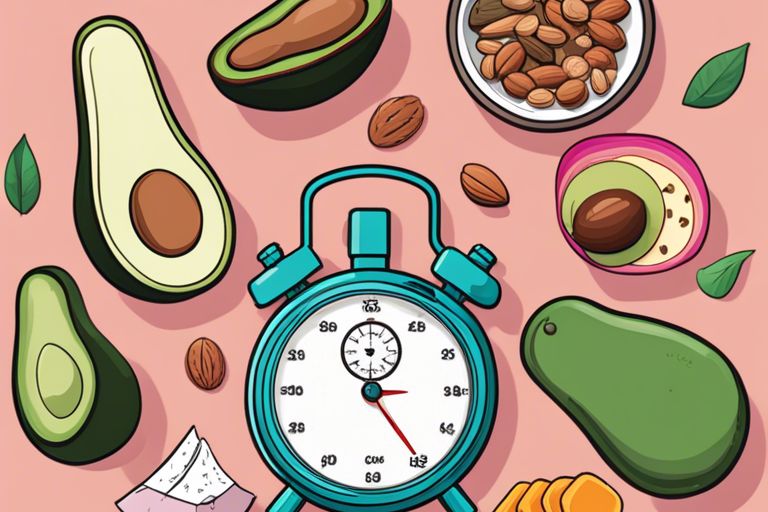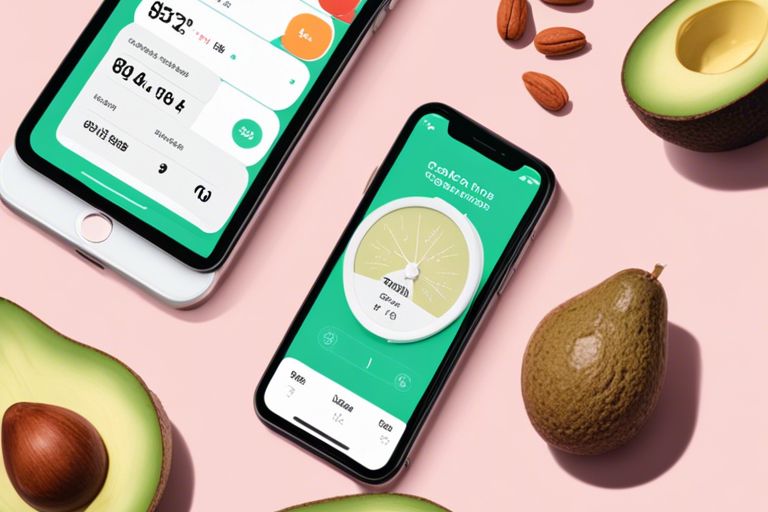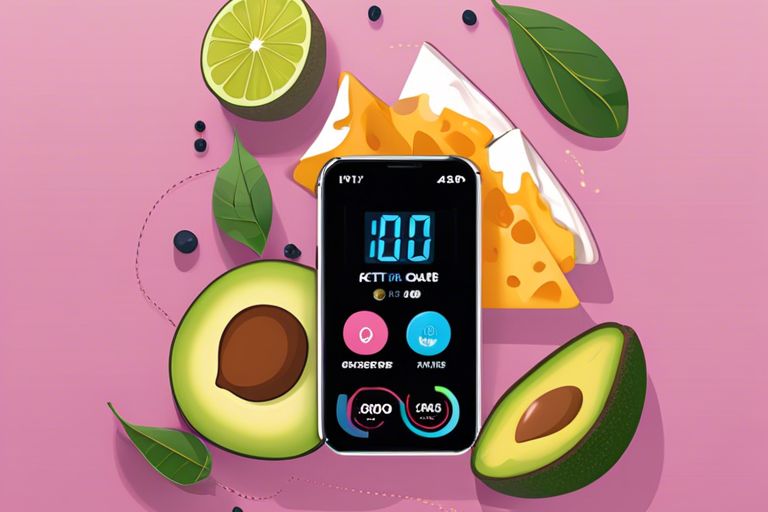Ketosis, the metabolic state in which your body burns fat for fuel instead of carbohydrates, is an essential component of the popular ketogenic diet. For some individuals, achieving ketosis can take time and effort, but there are strategies that can help expedite the process. In this quick guide, we will explore several effective methods for speeding up the entry into ketosis. By implementing these techniques, you can maximize the benefits of the ketogenic diet and reach ketosis more quickly, allowing you to experience increased energy levels, improved mental clarity, and enhanced weight loss results. Whether you are new to the ketogenic diet or looking to optimize your results, these tips can help you achieve ketosis efficiently and effectively.
Key Takeaways:
- Implement a strict low-carb diet: To quickly enter ketosis, focus on consuming fewer than 50 grams of carbohydrates per day, and prioritize healthy fats and protein in your meals.
- Engage in regular physical activity: Incorporating regular exercise, especially high-intensity interval training (HIIT), can help deplete glycogen stores and accelerate the body’s transition into ketosis.
- Consider fasting or intermittent fasting: Fasting or practicing intermittent fasting can jumpstart ketosis by depleting glycogen stores and promoting the breakdown of fats for energy.
Dietary Adjustments for Faster Ketosis
Some of the most important adjustments to make for speeding up the entry into ketosis are related to your diet. By carefully monitoring your macronutrient ratios and making smart food choices, you can help your body shift into a ketogenic state more quickly.
Macronutrient Ratios
Dietary adjustments for faster ketosis entry should focus on the macronutrient ratios in your diet. The standard recommendation for a ketogenic diet is to consume around 70-75% of your daily calories from healthy fats, 20-25% from protein, and 5-10% from carbohydrates. By adhering to these ratios, you can effectively switch your body from using glucose as its primary fuel source to utilizing fat for energy, thus entering ketosis more rapidly.
Foods to Embrace and Avoid
Ratios aside, the specific foods you consume can also greatly impact how quickly you enter ketosis. Embrace foods high in healthy fats such as avocado, nuts, seeds, and fatty fish. These sources of fat will support your body’s transition into ketosis. Avoid high-carbohydrate foods like bread, pasta, rice, and sugary treats, as they can inhibit the body’s ability to enter ketosis quickly.
Avoid processed foods, which are often laden with hidden sugars and unhealthy fats that can hinder your progress. Instead, focus on whole, nutrient-dense foods such as leafy greens, cruciferous vegetables, and lean proteins to support a faster transition into ketosis.

Fasting Techniques to Induce Ketosis
Obviously, one of the most effective methods for speeding up your entry into ketosis is through fasting. By abstaining from food for a period of time, you can quickly deplete your body’s glycogen stores and switch into a state of ketosis.
Intermittent Fasting
Induce ketosis through intermittent fasting, where you cycle between periods of eating and fasting. This can be done in various ways, such as the 16/8 method where you fast for 16 hours and consume all your meals within an 8-hour window. Intermittent fasting is an effective way to train your body to burn fat for fuel and can help you enter ketosis more quickly.
Extended Fasting Protocols
One of the most intense fasting techniques to induce ketosis is through extended fasting protocols, where you abstain from food for 24 hours or more. This method can rapidly deplete your glycogen stores and jumpstart the production of ketones in your body, putting you into ketosis within a shorter timeframe.
Techniques such as alternate day fasting, where you fast every other day, or the 5:2 method, where you eat normally for 5 days and restrict calories for 2 days, can also be effective for speeding up the entry into ketosis. These extended fasting protocols can be challenging, but they can provide quick results for those looking to get into ketosis as fast as possible.
Exercises to Enhance Ketone Production
For those looking to speed up their entry into ketosis, incorporating certain types of exercises can be beneficial. By engaging in specific forms of physical activity and adhering to a particular timing and frequency, individuals can enhance the production of ketones and promote a quicker transition into a ketogenic state.
Types of Exercise for Ketosis
Enhance ketone production by engaging in aerobic exercises such as running, cycling, or swimming. Resistance training, including weight lifting and bodyweight exercises, can also be effective in stimulating ketone production. Additionally, high-intensity interval training (HIIT) has shown to be beneficial in promoting ketosis. This form of exercise involves alternating between short bursts of intense activity and brief periods of rest. Yoga and Pilates can also aid in reducing stress levels, which may contribute to the body’s ability to enter ketosis.
Exercise Timing and Frequency
Types of exercise for enhancing ketone production should be performed on a regular basis to maximize the benefits. Consistency is key, and individuals should aim to engage in physical activity at least 3-5 times per week. Timing is also crucial, as exercising in a fasted state, such as in the morning before consuming any food, can further promote ketone production. This can help the body deplete its glycogen stores and shift towards utilizing fat for fuel, ultimately aiding in the entry into ketosis.
Timing exercise sessions to coincide with periods of fasting, such as during intermittent fasting or before a ketogenic meal, can optimize the body’s ability to produce ketones. By incorporating a combination of aerobic, resistance, and high-intensity interval training into a weekly exercise routine, individuals can effectively enhance ketone production and accelerate the process of entering ketosis.
“`html
Supplements and Aids for Ketosis
Unlike diet alone, supplements and aids can help to speed up the entry into ketosis and support the body’s transition to using fat for fuel. These supplements can include exogenous ketones as well as other supportive supplements that can help enhance the ketosis process.
Exogenous Ketones
On the market, there are several exogenous ketone supplements available in the form of ketone salts or ketone esters. These supplements can help elevate blood ketone levels, providing a quick source of energy for the body and potentially aiding in the transition into ketosis. Additionally, exogenous ketones may reduce the symptoms of the keto flu, such as fatigue and brain fog, that some individuals experience during the initial stages of ketosis.
Other Supplements Supporting Ketosis
One of the other supplements that may support the ketosis process is MCT oil, which can help increase ketone production in the body. Additionally, electrolyte supplements can help maintain the body’s electrolyte balance during the initial stages of ketosis, which may be disrupted due to increased urination and loss of water weight. These supplements can aid in preventing the dreaded keto flu and supporting overall well-being during the transition into ketosis.
Supplements such as exogenous ketones, MCT oil, and electrolyte supplements can play a crucial role in supporting the ketosis process, aiding in the body’s transition to using fat for fuel. These supplements can help to speed up the entry into ketosis and mitigate some of the potential side effects, ultimately making the process more manageable for individuals looking to achieve ketosis quickly and effectively.
“`

Monitoring and Measuring Ketosis Progress
To ensure that you are effectively entering ketosis, it is important to monitor and measure your progress. This will help you determine if you need to make any adjustments to your diet, exercise, or lifestyle to optimize your results.
Blood Ketone Meters
Ketone blood meters are a reliable and accurate way to measure the level of ketones in your blood. These meters work by pricking your finger to draw a small sample of blood, which is then analyzed for ketone levels. This can give you a real-time measurement of your ketosis progress and help you make informed decisions about your diet and lifestyle.
Signs and Symptoms of Ketosis
With the proper monitoring and measuring tools in place, it is also important to be aware of the signs and symptoms of ketosis. These can include increased thirst, frequent urination, and a dry mouth. Additionally, you may experience a decreased appetite, increased energy levels, and a change in the odor of your breath or sweat.
The signs and symptoms of ketosis are important indicators of your progress and can help you make necessary adjustments to your diet and lifestyle. By monitoring these signs, along with using blood ketone meters, you can ensure that you are effectively entering and maintaining ketosis.

Troubleshooting Common Ketosis Challenges
Your journey to ketosis may encounter some common challenges along the way. This section will address some of the most frequent issues and provide solutions to help you stay on track towards achieving ketosis.
Dealing with Keto Flu
An unavoidable hurdle for many beginners is the keto flu, which can manifest as headaches, fatigue, and irritability. This is caused by your body adapting to the shift from burning carbohydrates to burning fat for fuel. To alleviate the symptoms, make sure to stay well-hydrated, consume adequate electrolytes, and gradually reduce your carbohydrate intake rather than cutting it off abruptly. Additionally, consider incorporating MCT oil or exogenous ketones to provide your body with an immediate source of ketones, easing the transition.
Overcoming Plateaus in Ketosis
On your ketogenic journey, you may experience periods where your weight loss stalls, which can be frustrating. To overcome plateaus in ketosis, consider reassessing your macronutrient intake and adjusting your caloric intake. Incorporating intermittent fasting, increasing your physical activity, or experimenting with different types of fasting, such as fat fasting, may help kickstart your metabolism and get you back on track towards ketosis. Remember that plateaus are a common part of the process and with patience and persistence, you can push through.
Common strategies to overcome plateaus in ketosis include reassessing macronutrient intake, incorporating intermittent fasting, and increasing physical activity. By incorporating these methods and staying consistent with your ketogenic diet, you can overcome plateaus and continue progressing towards your ketosis goals.
Quick Guide – Speeding Up Ketosis Entry
Now that you have learned some key tips for speeding up the process of entering ketosis, you can start implementing them into your routine. By following the guidance provided in this quick guide, you can expect to see faster results and get into ketosis in no time. For more detailed information on how to get into ketosis quickly, check out this helpful resource on How to Get into Ketosis FAST (Under 4 Days): Quickest Plan.
FAQ
Q: What is ketosis and why is it important?
A: Ketosis is a metabolic state in which the body burns fat for energy instead of carbohydrates. It’s important for weight loss and can also provide mental clarity and sustained energy levels.
Q: What is the normal timeframe for entering ketosis?
A: Typically, it takes 2-7 days of following a strict low-carb diet to enter ketosis. However, individual factors such as metabolism and activity level can influence this timeframe.
Q: How can I speed up the entry into ketosis?
A: To speed up the entry into ketosis, you can engage in high-intensity exercise, reduce your carb intake to less than 20-50 grams per day, and increase your consumption of healthy fats.
Q: Can supplements help in entering ketosis faster?
A: Yes, exogenous ketone supplements can help your body enter ketosis faster by providing a source of ketones that your body can use for energy. However, it’s important to use these supplements in conjunction with a low-carb diet for best results.
Q: Are there any risks associated with trying to enter ketosis quickly?
A: Rapidly trying to enter ketosis can lead to symptoms of the “keto flu,” including fatigue, headaches, and irritability. It’s important to listen to your body and make gradual changes to your diet and exercise routine.
Q: What are some common mistakes to avoid when trying to enter ketosis quickly?
A: Some common mistakes to avoid include not drinking enough water, consuming too much protein, and not getting enough electrolytes. These can all hinder the body’s ability to enter ketosis efficiently.
Q: How can I tell if I am in ketosis?
A: You can tell if you are in ketosis by using at-home urine or blood tests that measure the level of ketones in your body. Common signs of being in ketosis include increased thirst, decreased appetite, and a “fruity” breath odor.

Leave a Reply